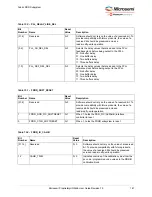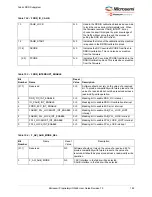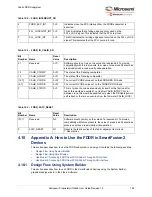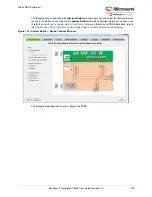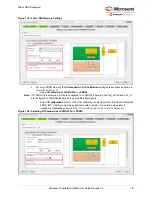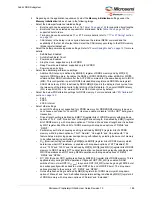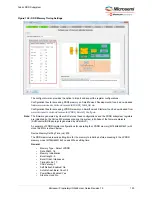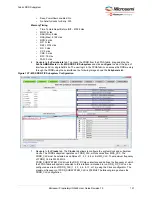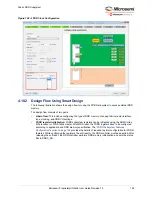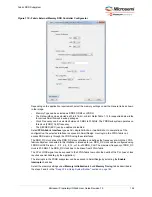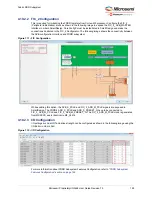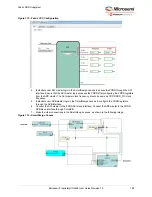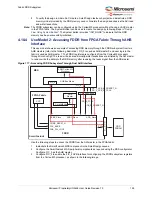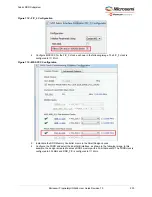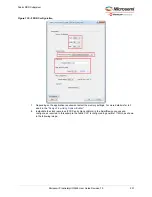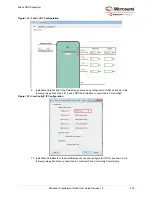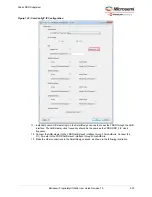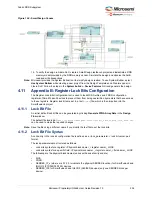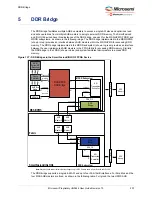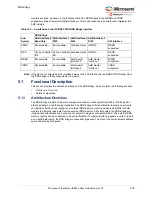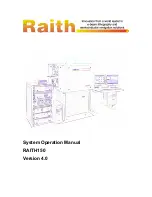
Fabric DDR Subsystem
Microsemi ProprietaryUG0446 User Guide Revision 7.0
194
Figure 110 •
Fabric External Memory DDR Controller Configurator
Depending on the application requirement, select the memory settings under the General tab as shown
in the image.
•
Memory Type can be selected as DDR2, DDR3 or LPDDR.
•
The Data width can be selected as 32-bit, 16-bit, or 8-bit. Refer Table 1-13 for supported data widths
for various SmartFusion2 device packages.
•
Clock Frequency can be selected between 20 MHz to 333MHz. The FDDR subsystem operates on
this clock (FDDR_CLK) frequency
•
The SECDED (ECC) can be enabled or disabled.
Select
FPGA Fabric Interface
type as AXI, single AHBLite, or two AHBLite. On completion of the
configuration, the selected interface is exposed in SmartDesign. User logic in the FPGA fabric can
access DDR memory through the FDDR using these interfaces.
The DDR_FIC clock drives the DDR_FIC slave interface and defines the frequency at which the FPGA
fabric subsystem connected to this interface is intended to run. DDR_FIC clock can be configured using
FDDR CLOCK Divisor—1, 2, 3, 4, 6, 8, 12, or 16—of FDDR_CLK. The maximum frequency of DDR_FIC
clock is 200 MHz. The DDR_FIC clock has to be driven from FPGA fabric.
The FPLL LOCK signal can be exposed to the FPGA fabric to monitor the health of the PLL (loss of lock
requires special handling by the application).
The interrupts in the FDDR subsystem can be exposed in SmartDesign by selecting the
Enable
Interrupts
check box.
Select the memory settings under
Memory Initialization
tab and
Memory Timing
tab as described in
the steps 3 and 4 in the
"Design Flow Using System Builder" section on page 184
.


